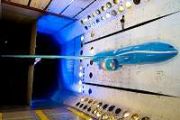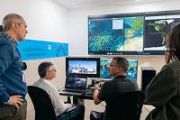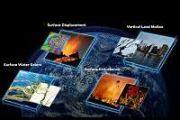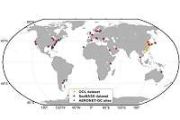
Copernical Team
ESA shares space proposals with industry

Europe’s space industry gathered at the European Space Agency (ESA) in the Netherlands on 3–4 April to gain insights into the future of space in Europe.
Week in images: 31 March - 04 April 2025
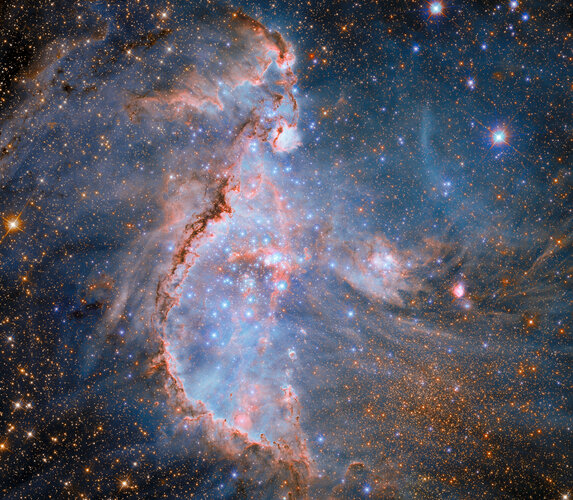
Week in images: 31 March - 04 April 2025
Discover our week through the lens
Amelie Schoenenwald | Science, Exploration, Training | ESA Explores #13
 Video:
00:08:54
Video:
00:08:54
Meet Amelie Schoenenwald— biotechnologist, business expert, and PhD in structural biology. Whether in the lab or the great outdoors, she thrives in extreme environments, ready to embrace the adventure of ESA’s Astronaut Reserve.
In this miniseries, we take you on a journey through the ESA Astronaut Reserve, diving into the first part of their Astronaut Reserve Training (ART) at the European Astronaut Centre (EAC) near Cologne, Germany. Our “ARTists” are immersing themselves in everything from ESA and the International Space Station programme to the European space industry and institutions. They’re gaining hands-on experience in technical skills like spacecraft systems and robotics, alongside human
NASA expands flight slots for private astronauts aboard ISS
 NASA is inviting proposals for two upcoming private astronaut missions to the International Space Station, with launches planned for 2026 and 2027. The initiative is part of the agency's broader strategy to foster a robust commercial presence in low Earth orbit and expand access to space for American companies.
"We are in an incredible time for human spaceflight, with more opportunities to
NASA is inviting proposals for two upcoming private astronaut missions to the International Space Station, with launches planned for 2026 and 2027. The initiative is part of the agency's broader strategy to foster a robust commercial presence in low Earth orbit and expand access to space for American companies.
"We are in an incredible time for human spaceflight, with more opportunities to NASA SPHEREx captures first light in space ahead of galaxy survey
 NASA's SPHEREx mission (Spectro-Photometer for the History of the Universe, Epoch of Reionization and Ices Explorer) has begun its in-space operations with a successful activation of its detectors. Launched on March 11, the telescope returned its first images from orbit, verifying that all instruments are functioning correctly.
Though still in an uncalibrated state and not yet viable for s
NASA's SPHEREx mission (Spectro-Photometer for the History of the Universe, Epoch of Reionization and Ices Explorer) has begun its in-space operations with a successful activation of its detectors. Launched on March 11, the telescope returned its first images from orbit, verifying that all instruments are functioning correctly.
Though still in an uncalibrated state and not yet viable for s ISRO advances nextgen rocket power with successful semi cryogenic engine test
 ISRO has taken a significant step forward in its efforts to develop a powerful semicryogenic engine, a key component intended to upgrade the LVM3 launch vehicle. On March 28, 2025, the space agency successfully completed the first hot test of the Engine Power Head Test Article (PHTA) at the ISRO Propulsion Complex in Mahendragiri, Tamil Nadu.
The Liquid Propulsion Systems Centre (LPSC) is
ISRO has taken a significant step forward in its efforts to develop a powerful semicryogenic engine, a key component intended to upgrade the LVM3 launch vehicle. On March 28, 2025, the space agency successfully completed the first hot test of the Engine Power Head Test Article (PHTA) at the ISRO Propulsion Complex in Mahendragiri, Tamil Nadu.
The Liquid Propulsion Systems Centre (LPSC) is Towards resilient navigation in the Baltics without satellites
 Efficient shipping routes are vital for Germany's economy, especially in and around the Baltic Sea. However, maritime operations remain vulnerable to disruptions in satellite navigation systems such as GPS or Europe's Galileo. Such failures can cause vessel navigation displays to lose position data or worse, deliver false coordinates, increasing the likelihood of accidents.
To counter thes
Efficient shipping routes are vital for Germany's economy, especially in and around the Baltic Sea. However, maritime operations remain vulnerable to disruptions in satellite navigation systems such as GPS or Europe's Galileo. Such failures can cause vessel navigation displays to lose position data or worse, deliver false coordinates, increasing the likelihood of accidents.
To counter thes NASA says asteroid 2024 YR4 size of a 10-story building; increases chances of moon impact
 NASA said that an asteroid previously believed to be destined for Earth is the size of a 10-story building and is now more likely to make impact with the moon.
Designated as near-Earth asteroid 2024 YR4, both NASA observers and members of the worldwide planetary defense community felt at first that the object, said to be 174-220 feet in size, might hit the Earth in 2032.
Those sa
NASA said that an asteroid previously believed to be destined for Earth is the size of a 10-story building and is now more likely to make impact with the moon.
Designated as near-Earth asteroid 2024 YR4, both NASA observers and members of the worldwide planetary defense community felt at first that the object, said to be 174-220 feet in size, might hit the Earth in 2032.
Those sa Galaxies stopped growing sooner than cosmic models predict
 For decades, astronomers believed that only star-forming galaxies populated the earliest epochs of the Universe. But new data from the James Webb Space Telescope (JWST) has overturned this expectation, revealing galaxies that halted star formation far earlier than previously imagined. In a major finding, a global team led by University of Geneva (UNIGE) researchers has identified the most distan
For decades, astronomers believed that only star-forming galaxies populated the earliest epochs of the Universe. But new data from the James Webb Space Telescope (JWST) has overturned this expectation, revealing galaxies that halted star formation far earlier than previously imagined. In a major finding, a global team led by University of Geneva (UNIGE) researchers has identified the most distan The Biggest Challenges Facing Space Exploration Today
 While space exploration has always pushed the boundaries of human knowledge, complex challenges have always emerged as we go further. There are many obstacles, from the harsh realities of space travel to the limitations of current technology.
As space agencies and private companies push missions to space, overcoming these challenges is becoming increasingly important. So, let's explore the
While space exploration has always pushed the boundaries of human knowledge, complex challenges have always emerged as we go further. There are many obstacles, from the harsh realities of space travel to the limitations of current technology.
As space agencies and private companies push missions to space, overcoming these challenges is becoming increasingly important. So, let's explore the 
































